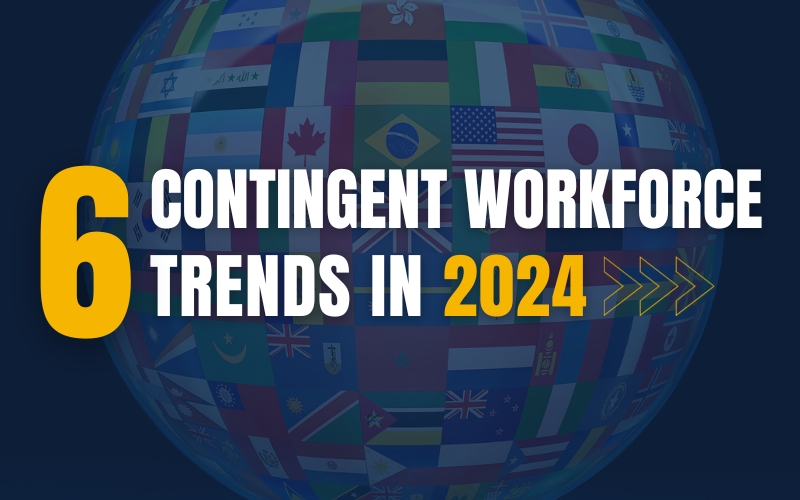Navigating the various rules surrounding the engagement of independent contractors can be a daunting task for companies in general. If you then add to that the complexity of operating in multiple jurisdictions, that will be enough to leave even the more seasoned professionals feeling quite overwhelmed by the numerous restrictions and requirements they must observe.
Because worker misclassification can lead to legal and financial penalties, it’s essential that companies get this issue right — no matter how difficult it is. This is where the assistance of an agent of record provider (or AOR) can make all the difference and help you work through these issues, allowing more time for you to focus on your core business.
What’s the Risk of Misclassification?
Classifying workers correctly is as critical in the U.S. as it is for companies across the world. Understanding the various restrictions and requirements for contractor engagement is crucial for compliance. The saving grace is that many of the key factors, such as supervision, direction, control, financial risk, and financial independence, tend to be somewhat constant elements recognized across jurisdictions.
In challenging economic times, employers might consider saving on employment costs by hiring independent contractors (known as ICs). Conversely, ICs might try to force a contractor status to gain access to certain tax benefits and maximize their net income. This is not a risk worth taking: Improper classification of an IC can lead to employment claims, backdated taxes and employer contributions, fines, and other penalties, as well as a potential permanent establishment risk for your business.
For years, whenever facing a headcount freeze, HR and procurement departments worldwide would switch to hiring all external talent as ICs. One of the issues with this approach is that despite the IC status, companies still try to manage these engagements as if the individuals were their direct employees. This is where most entities open themselves up to compliance risks.
With the best intentions and eagerness to keep the skills they so desperately need, businesses sometimes offer these “ICs” bonus payments and even paid time off — not realizing that these are strictly within the domain of an employer-employee relationship. This highlights the importance of not only assessing and classifying your workforce when first hiring, but also maintaining compliance throughout the duration of an assignment.
What Is an Agent of Record? How Does It Differ from an Employer of Record?
An AOR provider helps companies by carrying out worker classification assessments, typically known as IC compliance. These are performed to determine whether someone is a contractor or an employee. The classifications are not an exact science, and many factors are weighed to make the judgment.
If the classification indicates that someone is an employee, an Employer of Record service (known as EOR) is needed. This service permits companies to work with international employees without having to establish local entities or potentially violate local employment laws.
If the classification indicates that someone is an IC, it is appropriate to proceed with an AOR engagement. An AOR provider will arrange the execution of a contract for services that is compliant with the legislation of the country (or province, canton, or state) where the contractor is based. An AOR is also the party that manages the engagement from beginning to end and pays the contractor’s invoices on your behalf. Additionally, in some cases, an AOR may even fulfill tax remittance obligations on behalf of the employer — though it is crucial to note that ICs are ultimately responsible for their own taxes.
AOR and EOR services both have their place. Because they aren’t interchangeable, companies must understand which service they need.
Why Is an AOR Service Useful? When Should It Be Used to Help with Independent Contractors?
For businesses hiring ICs in different jurisdictions, it’s difficult to know what classifications apply locally and how to meet compliance standards across the world. Even countries with relatively similar cultures, languages, and customs can quickly depart from each other in worker classification rules. This is where an AOR business service provider comes in handy.
For a U.S. company engaging an IC in the U.K., for example, there are many important requirements to fulfill. To start with, the U.K. has specific IC legislation called IR35. One of the first things that must be done is an assessment based on IR35 parameters. Once the classification is verified, the hirer should issue the IC a status determination statement (or SDS) confirming the contractor’s deemed employment status following the IR35 assessment and the reasons that led to that conclusion. An AOR provider will be able to assist the companies with preparing an SDS and meeting other local requirements, including a new assessment every six months.
That’s a lot of potential issues and tripping points for two countries that have so much in common. Can you imagine the potential problems in different jurisdictions? IES can help carry out the assessment per local rules and standards and ensure that compliance requirements are met throughout the life of the assignment. With a strong AOR partnership, your compliance issues won’t reach a boiling point.
Ready to take the risk out of using ICs? IES’s proven IC compliance and Agent of Record services protect your business from IC misclassification – and the fines, tax payments, co-employment lawsuits, and brand damage that can follow.
Written by: Helga Venturini Townend, Senior Director of Global Operations at IES
Helga Venturini Townend is the Senior Director of Global Operations of Innovative Employee Solutions (IES), a leading provider of remote and contingent workforce solutions, specializing in global Employer of Record, Agent of Record, and Independent Contractor compliance services in 150+ countries. Founded in 1974, IES is a woman-owned business, certified by the WBENC and partners with companies to provide compliant employment solutions that empower people’s lives.






